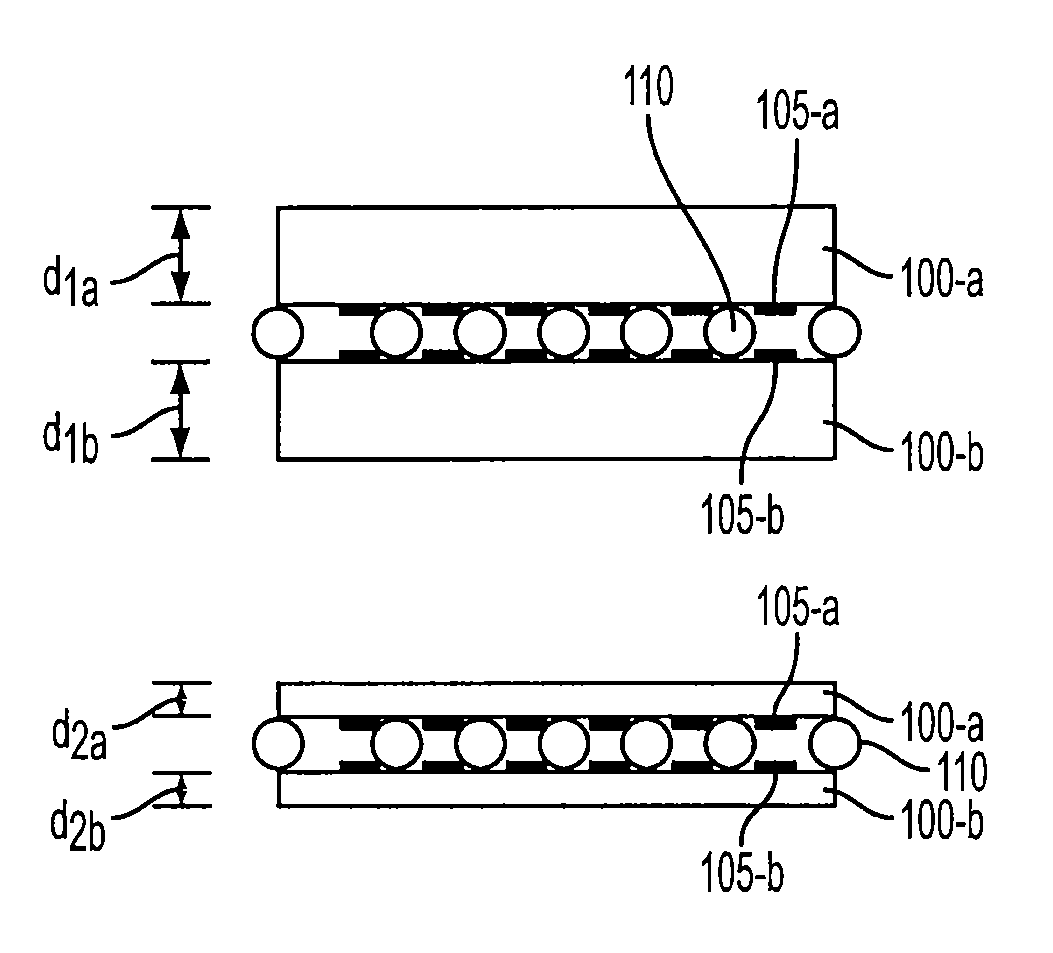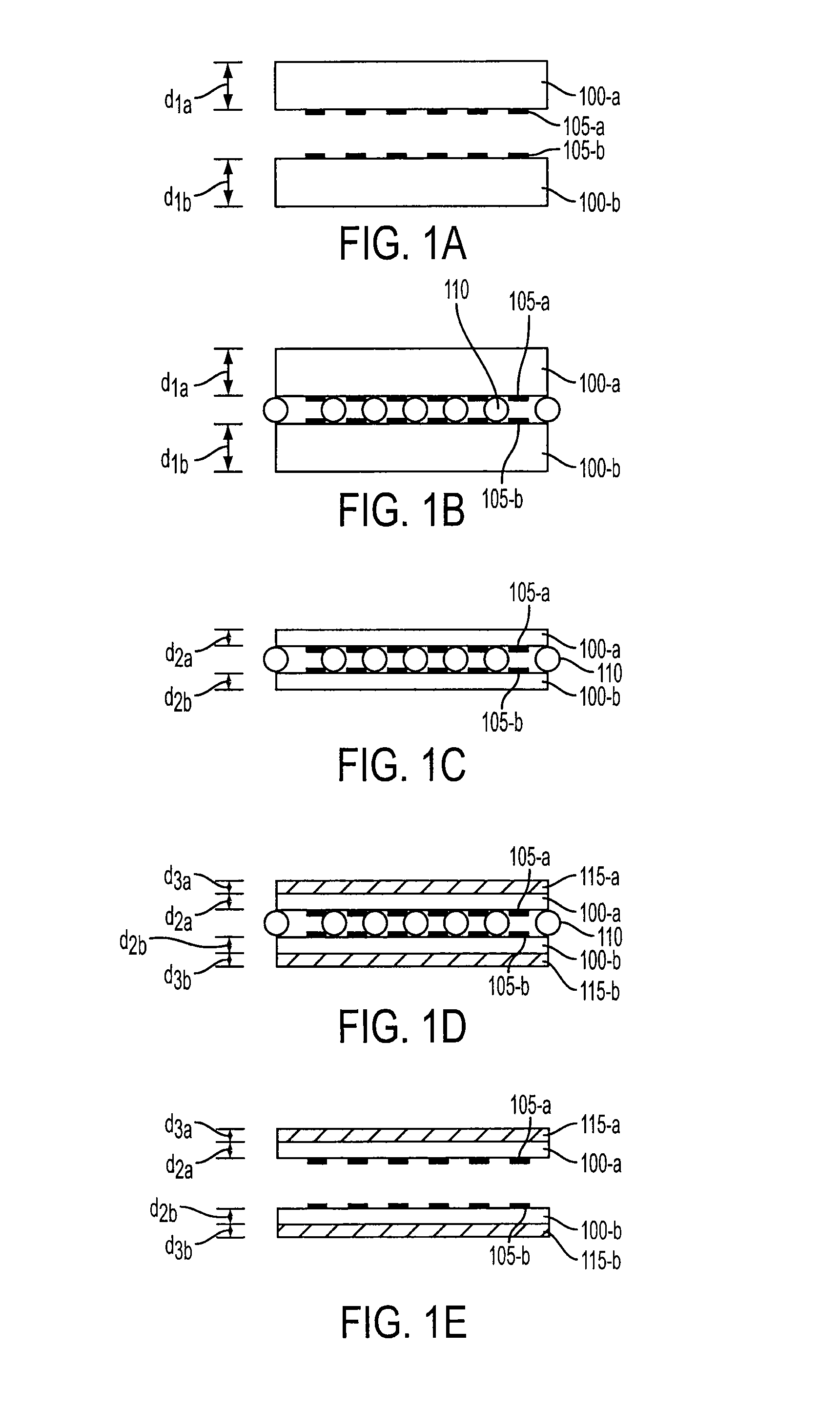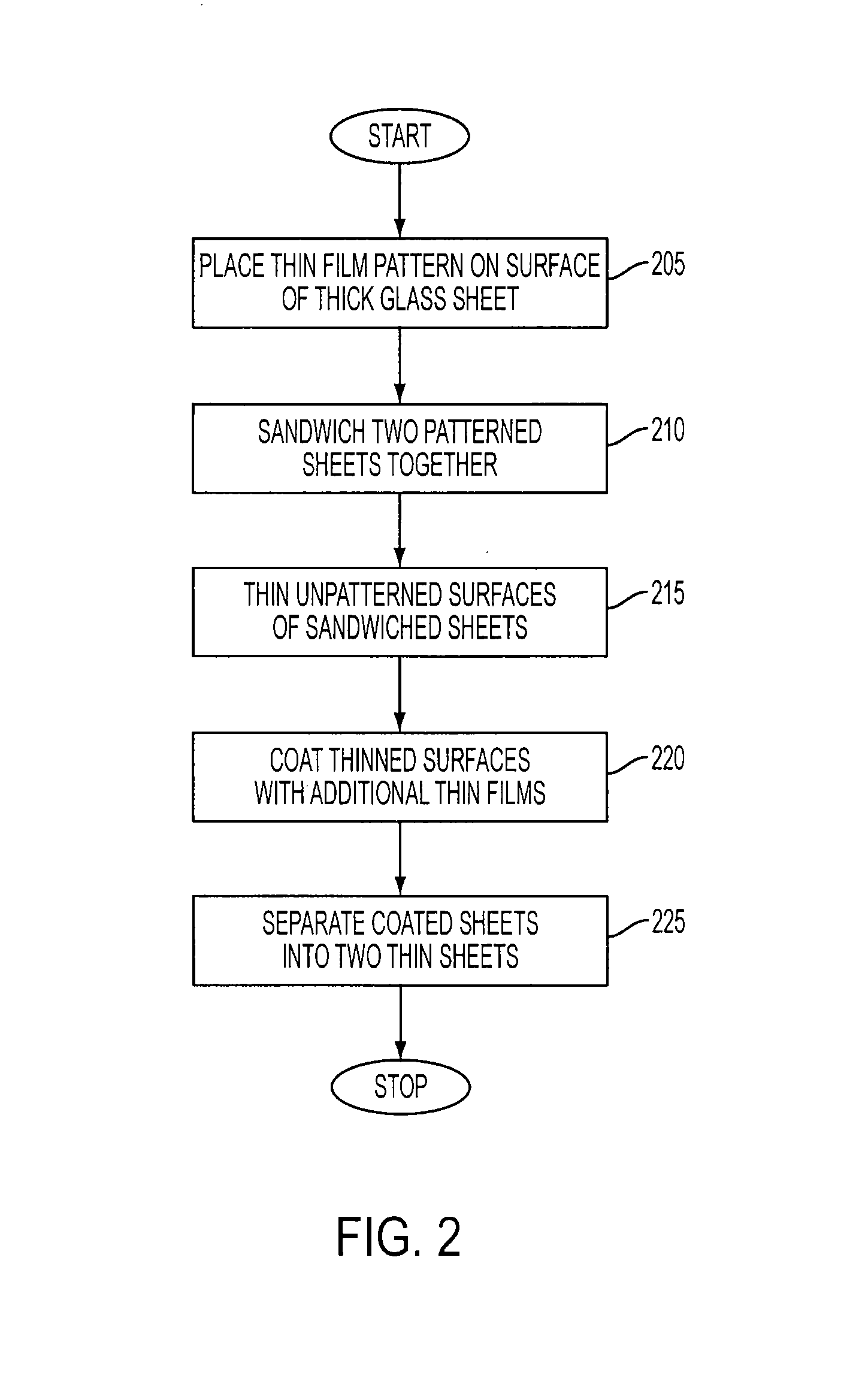Method for fabricating thin sheets of glass
a technology of thin sheets and glass, applied in the direction of film/foil adhesives, manufacturing tools, after-treatment details, etc., can solve the problems of thin glass being subject to deformation or damag
- Summary
- Abstract
- Description
- Claims
- Application Information
AI Technical Summary
Benefits of technology
Problems solved by technology
Method used
Image
Examples
Embodiment Construction
[0023]In the following description of preferred embodiments, reference is made to the accompanying drawings which form a part hereof, and in which it is shown by way of illustration specific embodiments in which the invention may be practiced. It is to be understood that other embodiments may be utilized and structural changes may be made without departing from the scope of the preferred embodiments of the invention.
[0024]This relates to the fabrication of thin sheets of glass or other substrate material for use in devices such as touch sensor panels. In some embodiments, fabrication can be achieved using standard LCD technology. Standard equipment for fabrication of LCD panels has been designed with a minimum thickness tolerance of 0.5 mm. This is because glass (or other transparent material) used to fabricate LCD panels should be at least 0.5 mm thick in order to withstand the rigors of fabrication. Thinner glass would be subject to deformation or damage.
[0025]Touch sensor panels ...
PUM
| Property | Measurement | Unit |
|---|---|---|
| thicknesses | aaaaa | aaaaa |
| thick | aaaaa | aaaaa |
| thickness | aaaaa | aaaaa |
Abstract
Description
Claims
Application Information
 Login to View More
Login to View More - R&D
- Intellectual Property
- Life Sciences
- Materials
- Tech Scout
- Unparalleled Data Quality
- Higher Quality Content
- 60% Fewer Hallucinations
Browse by: Latest US Patents, China's latest patents, Technical Efficacy Thesaurus, Application Domain, Technology Topic, Popular Technical Reports.
© 2025 PatSnap. All rights reserved.Legal|Privacy policy|Modern Slavery Act Transparency Statement|Sitemap|About US| Contact US: help@patsnap.com



